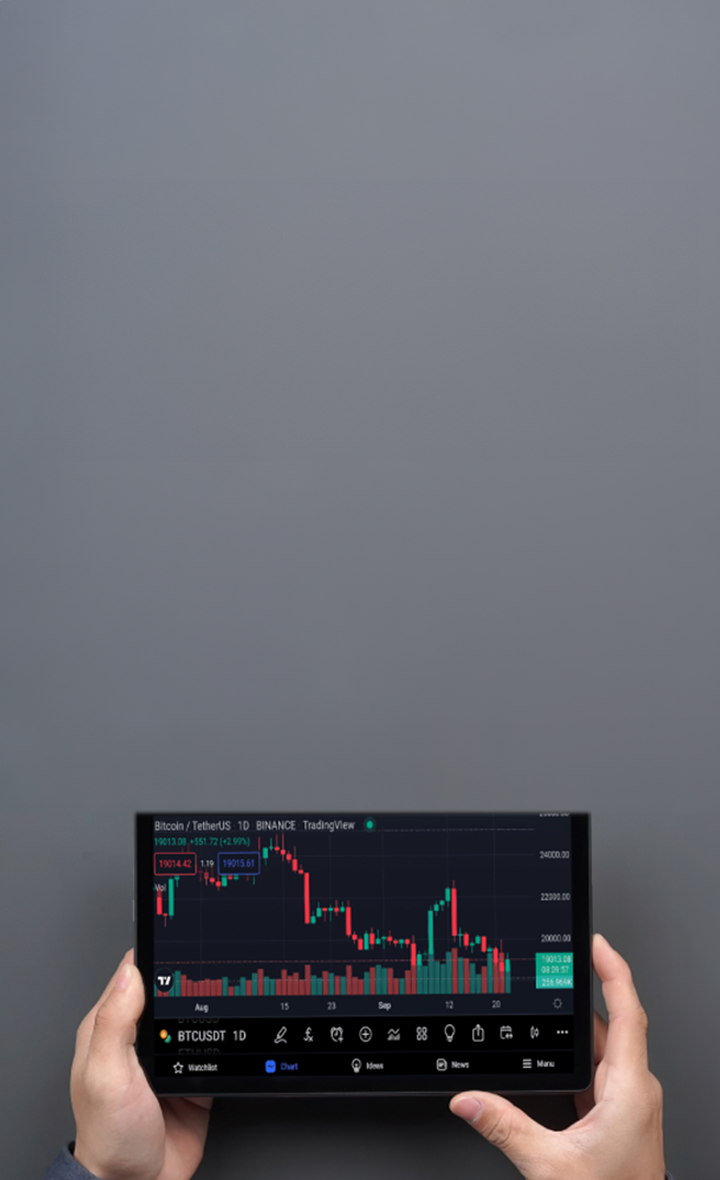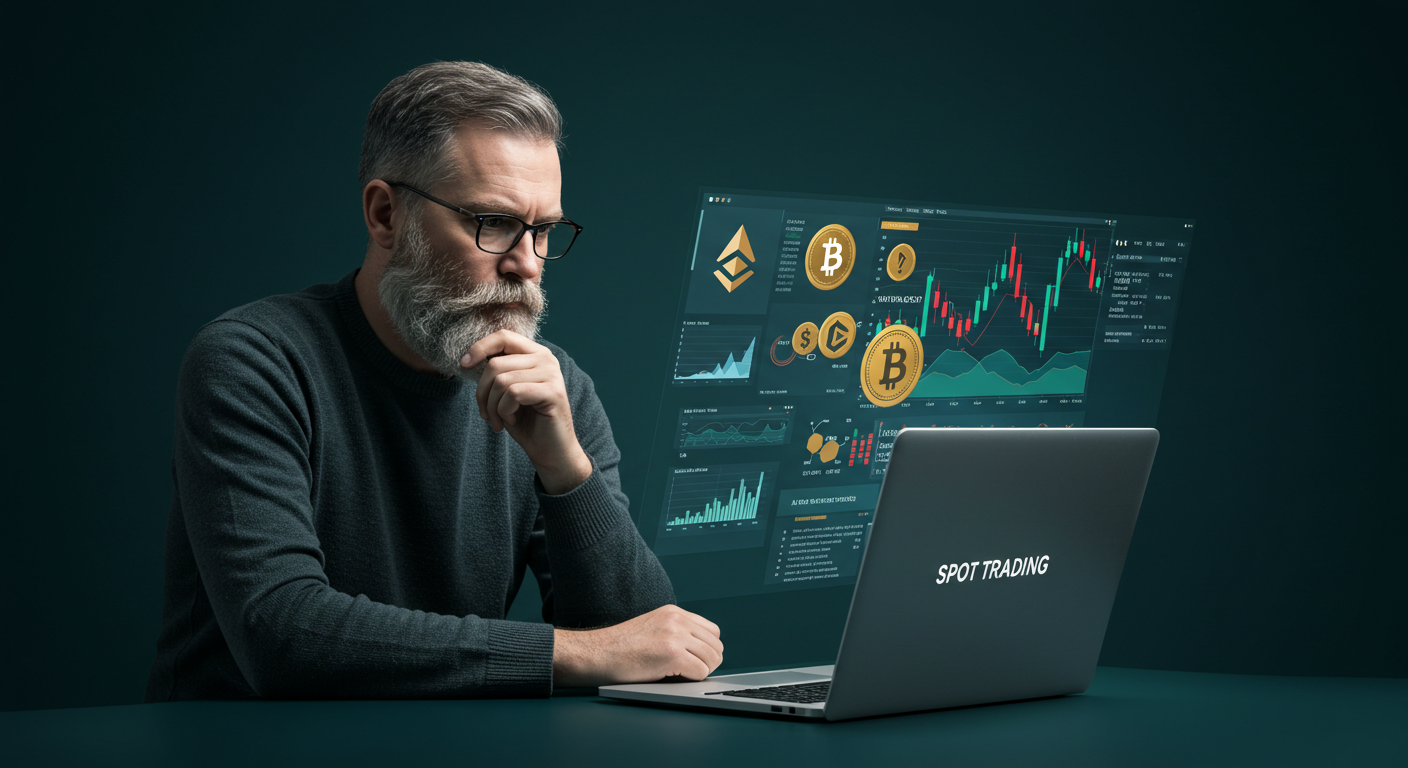

What is Spot Trading and How does it Work?
Spot trading is a trade that takes place “on the spot”—or within a short period—based on the current market price of an asset. This approach is fundamental to various CFD trading strategies, including day trading where positions are opened and closed within the same trading session, and swing trading where traders hold positions for several days to weeks to capitalize on price swings. The term spot trading means the immediate purchase or sale of a financial asset—such as when you trade forex currency pairs, trade crypto and cryptocurrency tokens, or even trading precious metals like gold—for instant settlement at the prevailing spot price. Unlike forwards or futures contracts, spot trading completes the order (or its cash equivalent) right away, making it ideal for active traders who want immediate market exposure. For example, if 1 USD currently exchanges for 1.491 AUD, that is the spot price for USD/AUD in the currency market. Whether you're engaged in day trading EUR/USD pairs, or swing trading Bitcoin, spot trading allows you to execute these transactions at current market rates without waiting for future settlement dates.
Key Takeaways:
Spot trading involves the immediate purchase or sale of a financial asset, such as a stock or cryptocurrency, at the current market price (the "spot price") for near-instantaneous delivery and settlement instead of waiting for the order to be filled.
Spot prices reflect real time supply and demand; a spot trade gives you immediate ownership unless using CFDs, with settlement posting to your account within a couple of business days.
Performing spot trading means you enter at the live price and exit at a new one; supply and demand set that price, then profits follow the direction you bet on, and CFDs let you go long or short easily to profit from moves going both ways.
Spot trading via CFDs contracts for difference gives real time pricing and leveraged long or short exposure without owning or taking delivery of the asset, making it flexible and cost efficient for short term strategies, but leverage also increases the risk of loss.
Any asset with a measurable live price can be spot traded across thousands of markets, for example forex pairs such as EURUSD, USDJPY and GBPUSD, and cryptocurrencies such as Bitcoin, Ethereum and XRP, and on TMGM these appear as spot or cash.
Find good spot entries by combining technical and fundamental analysis using moving averages, support and resistance, RSI, MACD, Bollinger Bands and volume, tracking economic data, news and sentiment including TMGM Trading Central Tools, then execute with a clear plan in liquid markets, use stop losses with only 1 to 2 percent risk per trade, start small, diversify and review results to improve.
Crypto spot trading via CFDs works like other spot markets: sellers quote, buyers place spot orders at a chosen price, you speculate on the token’s price as the underlying spot value moves, and crypto’s high volatility offers especially strong opportunities with the right strategy.
Forex spot trading delivers real time prices on capable platforms, differs from but underpins futures, options and forwards through current and future spot rates, and operates in a deep highly liquid market trading over 7.5 trillion dollars daily.
TMGM gives you direct spot market access across forex, precious metals, and crypto with lightning fast execution, tight spreads, advanced platforms like MT4 and MT5 plus proprietary options, and 24/5 local support so you can act on real-time opportunities.
What is Spot Trading?
Spot trading is the buying or selling of assets like currencies, stocks, or cryptocurrencies at the current market price for immediate delivery and settlement. This is a straightforward and transparent method, popular with beginners, where you directly own the asset once the trade is complete. Unlike futures trading, which involves a contract for future delivery, spot trading occurs in real-time and is often used to react to short-term market fluctuations.
So, if 1 United States Dollar is worth 1.491 Australian Dollars right now, this is the spot price for USD/AUD in the currency market.
Spot trading is a popular choice among investors, as it allows for the immediate buying and selling of financial assets at their current market price, enabling instant participation in market movements for high-precision trading.
How does Spot Trading Work?
How are prices determined?: The current supply and demand for the asset at that exact moment determines the current asset price, also known as the spot price.
What happens after executing a spot trade?: When you buy the asset by spot trading, you own it immediately, even though the final settlement might take up to a couple of business days to reflect in your portfolio or account.
Do I own the asset bought?: Unless you have executed a spot trade through CFDs, then you fully own the asset, which you can then hold, sell, or transfer as you see fit.
To start spot trading: Create a spot trading account
To get started – apply to open an account. You can trade spot markets using a CFD trading account. There’s no obligation to add funds until you want to place a trade.
How to perform Spot Trading?
After opening an account, spot trading follows a set of very simple trading mechanism:
Opening then Closing Spot Positions:
Opening a position through spot trading already means that you start the position at current spot price and close at a new spot price.
If the underlying spot value has moved in the direction you predicted, you should make a profit.
Supply & Demand Dynamics:
As a note, if demand rises faster than supply, the current spot price rises too.
If demand falls while supply is high, the spot price will drop.
Long position vs. Short position:
Using CFD as your spot trading instrument, you can automatically go long (buy) or short (sell) on your spot position. This is because CFD is a product that speculates on the price of an asset without involving owning any assets, therefore going long or short can be easily executed by the broker.
For example, in the forex and crypto market, you can easily open a spot selling position and potentially profit on a downward spot price movement.
Spot Trading with CFDs
Traders can conduct spot trades via contracts for difference (CFDs) for several benefits including, using leverage & margin, going long or short with ease, but remember, using leverage can amplify potential loss.
CFD Definition: CFDs are a derivative that track the value of an asset without having to take ownership or hold the asset so it makes shorting a position much easier than other platforms.
Leverage & Market Exposure: Spot trading with CFDs allows you to take advantage of real-time pricing and employ leverage to gain greater exposure to the market, with amplified potential profits but also loss.
No Physical Delivery Needed: Unlike traditional spot trades and any type of investing, spot trading CFD positions do not actually involve ownership of the underlying asset—making them extremely flexible and cost-efficient for most trading strategies, especially short-term trading strategies.
Picking an Equity Market to Spot Trade
As long as the asset has a current value that can be measured over time, any commodity or asset can be spot traded.
You can choose from thousands of financial markets, including:
Forex, with major pairs such as EURUSD, USDJPY, GBPUSD, AUDUSD, USDCAD, etc.
Energies, including Brent crude oil, and WTI crude oil.
Precious Metals, including Gold, Silver and Platinum.
Cryptocurrencies, including Bitcoin, Ethereum, XRP, BNB, DOGE, DOT, etc.
Shares, such as Nvidia: NVDA, Tesla: TSLA, Meta Inc.: META, Apple Inc: AAPL, Advanced Micro Devices, Inc. : AMD.
Indices, including the S&P 500, Dow Jones 30, DAX, FTSE 100, Nikkei.
Please note that spot markets are referred to as ‘spot’ or ‘cash’ on our platform, TMGM.
How to find good spot trading opportunities/entry points?
1. Market Analysis
Technical Analysis (TA): Use charts and statistical indicators to spot patterns and estimate future price moves.
Trend identification: Apply moving averages such as the 50 day and 200 day to find the main direction. A shorter MA crossing above a longer MA, often called a golden cross, can suggest a buy setup.
Support and resistance: Mark price areas where demand or supply is strong enough to pause or reverse moves. Buying near support and selling near resistance is a common approach.
Momentum indicators: Use RSI and MACD to flag overbought conditions when RSI is above 70 and oversold conditions when RSI is below 30, which may precede reversals.
Volatility indicators: Bollinger Bands help judge volatility. Price moving outside the outer bands can signal stretched conditions or a potential breakout.
Volume analysis: Elevated trading volume tends to confirm the strength of a move. Breakouts on strong volume are usually more dependable.
Fundamental Analysis (FA): Assess intrinsic value by reviewing economic and asset specific drivers.
Economic indicators: Watch GDP releases, interest rate decisions, and inflation data since these shape sentiment and trend direction.
News and events: Track earnings, mergers and acquisitions, and for crypto, project updates and regulatory changes. Such events often act as catalysts for large price moves.
Market sentiment: Gauge investor mood through news, market sentiment tools which are included in TMGM’s Trading Central Tools. Periods of extreme fear or extreme greed can hint at turning points.
2. Strategy and Risk Management
Create a clear plan:
Set entry, exit, and stop loss rules before placing any trade to curb emotional decisions.
Prioritize liquidity:
Trade high-volume assets so you can enter and exit quickly without moving the price.
Control risk:
Limit each position to about 1–2 percent of total capital and use stop loss orders to cap losses.
Start small and practice:
Focus on a few assets or paper trade to validate your strategy before committing real money.
Diversify:
Spread investments across different assets to reduce reliance on any single position.
Keep learning:
Review all trades, wins and losses, to find patterns, correct mistakes, and refine your approach.
What is Spot Trading in Crypto?
How does a professional trader spot trade crypto? Also, how do you make money spot trading crypto?
Spot trading crypto CFD works like any other spot trades. Sellers make an offer and request a sell price to the buyer. The buyer then places a spot order for the CFD crypto token with a specific bid or purchase price.
In the case of CFDs, you buy a CFD crypto asset, speculating on its price, and then wait and see how the underlying spot trade value moves over time.
The only significant difference between spot trading crypto CFDs and other CFDs is the volatility of the crypto’s spot trading market, which can lead to excellent profits. Many traders find this volatility exciting, and it can lead to opportunities with the right strategy.
Spot Trading Forex: What do you need to know?
Currencies are an asset which constantly fluctuate in price, making them an excellent option for those interested in diverse trading avenues.
Real-Time Pricing & Platform Features: In the spot forex trading market, prices are constantly updating, reflecting live supply and demand dynamics. This continuous flow of real-time quotes is crucial for executing spot trades effectively. An advanced spot trading platform is therefore essential, especially for spot trading for beginners, enabling them to access these dynamic prices and make informed decisions quickly.
Core Differences of Spot vs. Derivatives: While forex futures, options, and forwards are fundamentally different to spot trades, they are still closely linked—because all these derivatives rely upon current and future spot forex trading rates.
Forex Spot Market Size & Liquidity: The forex spot market is the world’s largest, with over $7.5 trillion traded daily, ensuring deep liquidity and tight spreads.
Next Steps with TMGM: Your Spot Trading Platform
Spot trading offers direct market access with low spreads and broad market exposure. When you’re ready to dive in—whether it’s forex, precious metals, or spot trading cryptocurrencies—TMGM provides:
Lightning-Fast Execution: Perform spot trading with minimal slippage.
Tight Spreads: Keep spot trading costs low across all major markets.
Advanced Platforms: Trade on MT4, MT5, or TMGM’s proprietary platforms.
Local Support: 24/5 expert assistance to guide your spot-trading journey.
Experience spot trading on your terms—open an account with TMGM today and seize opportunities as they happen in real time.
Tradez Plus Intelligemment Aujourd'hui




Frequently Asked Questions (FAQs) about What is Spot Trading?
What is spot trading?
Is spot trading good for beginners?
Can you profit from spot trading?
Is spot trading illegal?
How profitable is spot trading?


Réel
Compte
Instantanément




